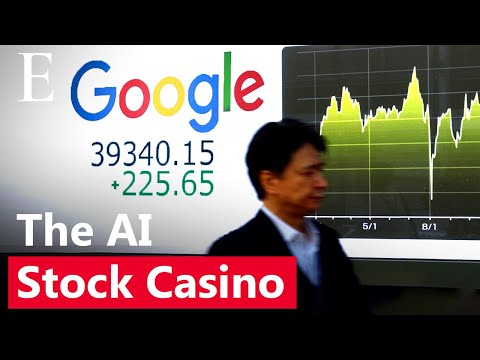The video explains how tech CEOs are leveraging AI hype to inflate their companies’ stock prices, creating a speculative market environment reminiscent of past bubbles like the dotcom crash. It warns that despite massive gains driven by retail investors and AI-related announcements, this enthusiasm may lead to unsustainable valuations and significant market corrections.
The video explores how artificial intelligence (AI) has become a powerful tool for tech CEOs to inflate their companies’ stock values, creating a speculative environment reminiscent of past market bubbles. It begins by highlighting the widespread participation of Americans in the stock market, with 61% investing, yet 71% losing money. The recent surge in wealth among tech billionaires like Larry Ellison and Elon Musk is tied closely to their companies’ association with AI. For instance, Oracle’s stock soared after announcing AI-related investments, pushing Ellison to become the world’s richest person. Similarly, Musk’s purchase of Tesla shares led to a rapid increase in his net worth, illustrating how AI hype can drive stock prices and personal fortunes.
The video then traces the historical context of stock market participation and speculation. In 1929, only a small fraction of Americans invested in stocks, yet their actions triggered a global financial collapse. Over the decades, stock market access expanded significantly, especially from the 1980s onward, fueled by mutual funds, retirement plans, and the internet. The dotcom bubble of the late 1990s exemplified how speculative enthusiasm for emerging technologies without solid economic foundations can inflate massive bubbles, culminating in a severe market crash in 2000. This history sets the stage for understanding the current AI-driven market dynamics.
The rise of accessible digital trading platforms like Robinhood and Charles Schwab further transformed investing into a form of short-term gambling, especially during the COVID-19 pandemic. Lockdowns and increased free time led a new generation of mostly young investors to flood the market, doubling retail trading volumes in a matter of months. This shift from long-term investment to rapid speculation created fertile ground for the AI frenzy, where companies merely mentioning AI in their communications could see their stock prices soar, regardless of actual business fundamentals.
The AI boom itself is characterized by massive stock price increases for companies linked to the technology. Nvidia’s stock grew over 200% in 2023 due to AI chip demand, while Microsoft added over $500 billion to its market cap after integrating AI into its products. Startups with little to no revenue attracted billions in investment simply by associating with AI. The NASDAQ index rose 55% in 2023, driven by a handful of major tech firms dubbed the “Magnificent 7,” all heavily involved in AI. Retail investors contributed significantly to this trend, pouring over $150 million daily into AI-related stocks, reflecting a speculative betting mentality rather than fundamental analysis.
Finally, the video warns of the risks posed by this AI-driven speculation. Drawing parallels to the dotcom bubble and the 2008 financial crisis, it cautions that excessive reliance on AI as a value driver could lead to unsustainable overvaluation and significant market corrections. The history of financial markets shows that enthusiasm for new technologies, when detached from economic realities, often results in devastating losses. The video concludes by emphasizing the need for caution and awareness of the speculative nature of the current AI stock market frenzy.
